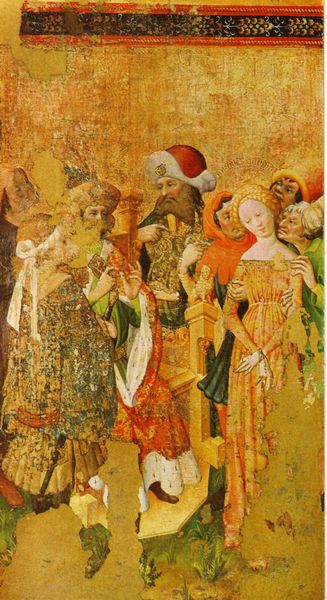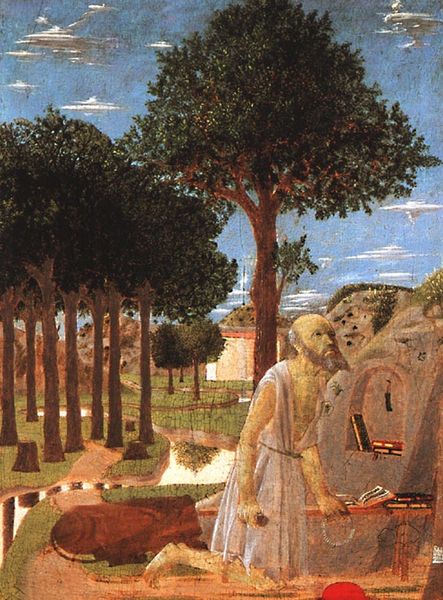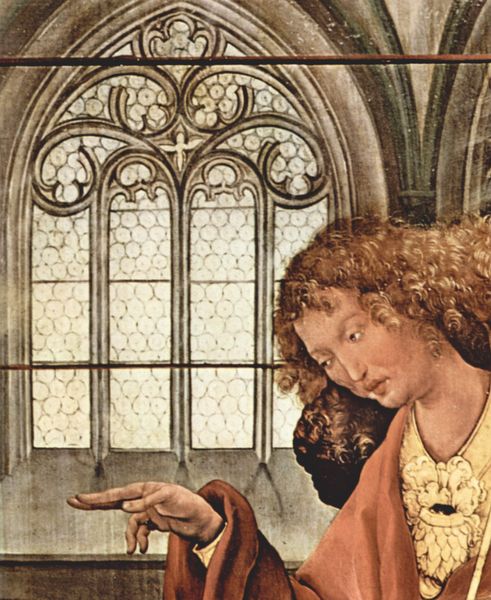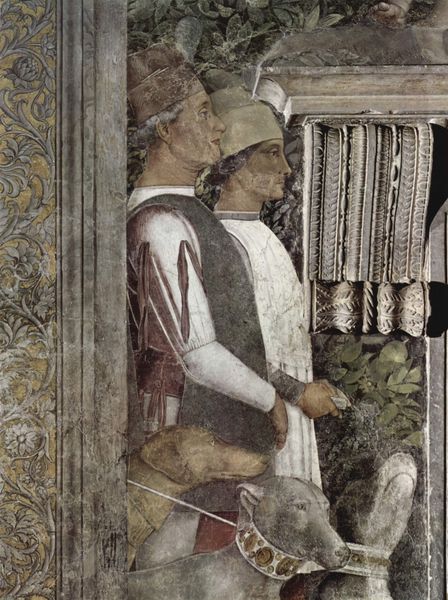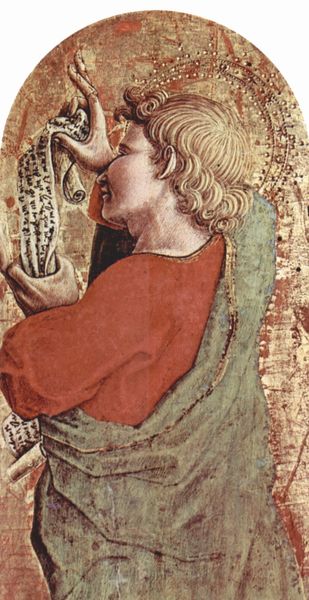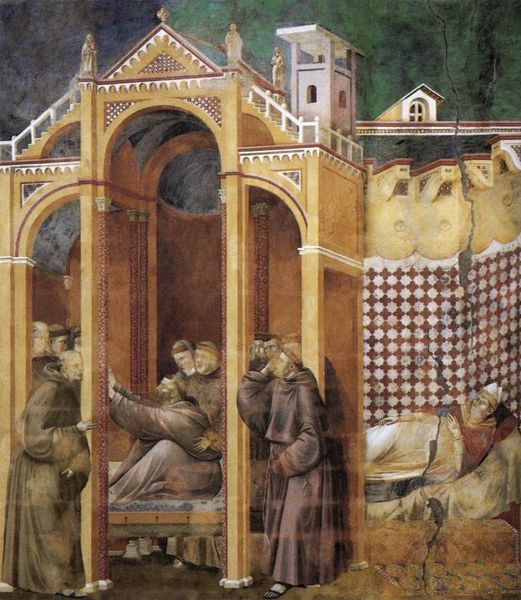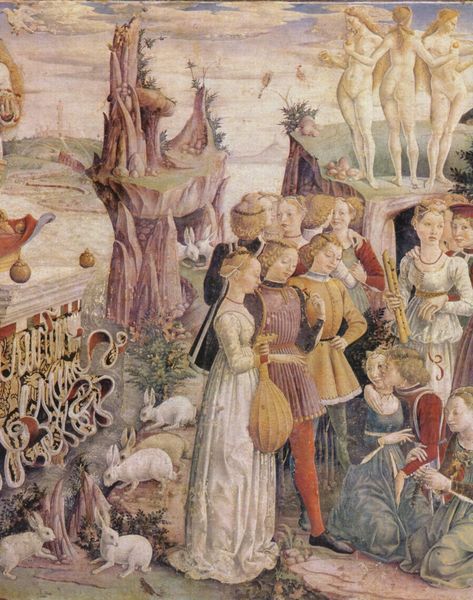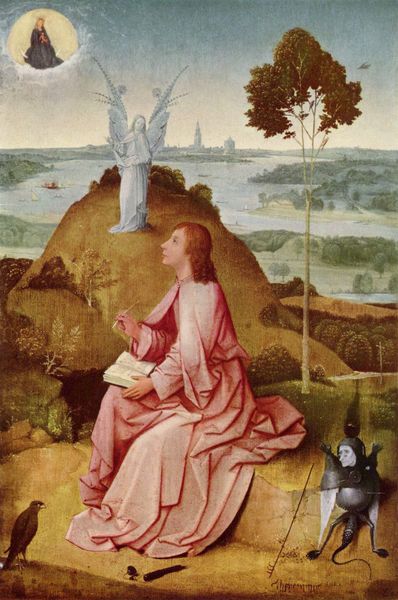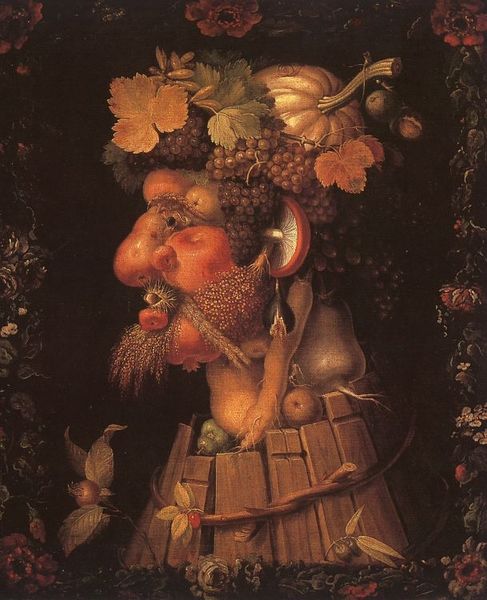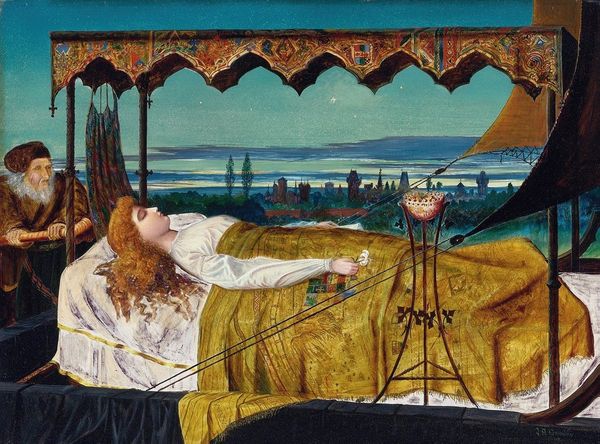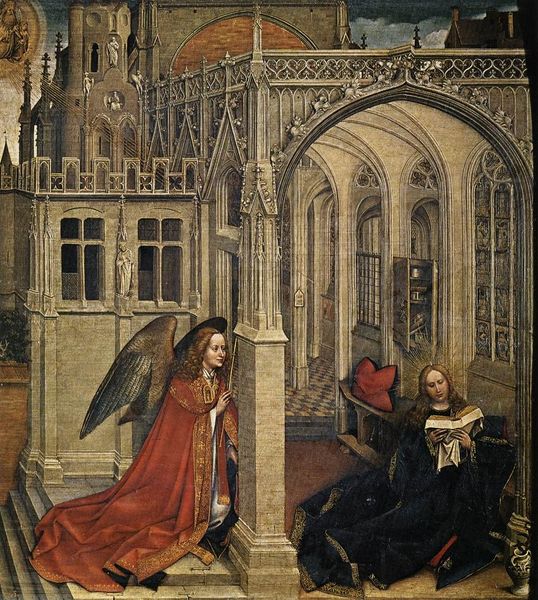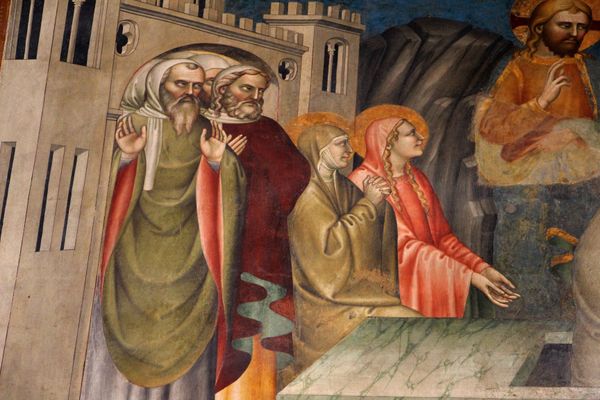
painting, oil-paint
#
portrait
#
high-renaissance
#
narrative-art
#
painting
#
oil-paint
#
landscape
#
oil painting
#
famous-people
#
cityscape
#
history-painting
#
academic-art
#
italian-renaissance
Copyright: Public domain
Editor: Here we have a fragment of Albrecht Dürer's oil painting, "The Lady of the Festival du Rosaire," painted in 1506. I’m immediately struck by the way the cityscape seems to loom behind the figure. It’s a really interesting juxtaposition. What significance do you find in the combination of portrait and cityscape? Curator: It's a powerful connection of the individual to their world, isn’t it? Think about the Renaissance obsession with humanism alongside the rising power of city-states. Dürer gives us a visual shorthand for civic pride, perhaps even a claim to lineage or belonging. Note how the figure seems to emerge from the city itself – almost as though he is one of its key pillars, literally. He *is* the city and the city *is* him. What emotions does this invoke for you? Editor: It evokes a sense of responsibility, definitely, like he carries the weight of the city. I'm wondering about his hair, why Durer might make the conscious choice for these aesthetic details and for their position and style? Curator: Ah, his hair – look at the careful placement and colour of these shapes. Long hair, particularly at this time, could signify status, but the specific reddish hue… Does it perhaps resonate with the colours of certain vestments, associating the man with religious devotion or a certain sacred flame? What hidden messages might that visual connection carry? Think of it as a branding strategy; by choosing to connect oneself through symbolism to a specific group. It’s the perfect, instant message and commitment that a painter can achieve in his artwork. Editor: So it’s a layering of symbolic connections. Civic, personal, and potentially spiritual identities are all intertwined here. That really enriches the image, doesn’t it? Curator: Precisely. By unpacking the visual language, we move beyond just admiring the painting's surface to understanding the complex dialogue Dürer establishes with his viewers – and with posterity itself. Editor: I hadn't considered it in that light, more than meets the eye and its significance beyond pure aesthetics. Thank you for the insight!
Comments
No comments
Be the first to comment and join the conversation on the ultimate creative platform.
